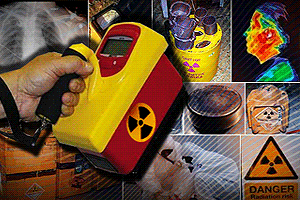LETTERS | I refer to the letter Confusion on the specific activity of thorium.
I’m baffled by the writer's incomprehension over a straightforward calculation.
The specific activity of pure Thorium-232 is 4070 Bq/gm. As the parent radionuclide in a decay chain, 1655 ppm of Thorium-232 in Lynas’ WLP solid wastes contribute 6.7 Bq of radioactivity per gramme of WLP residues.
In a secular equilibrium, the nine progeny radionuclides in the Th232 decay chain add another (9 x 6.7 Bq) of radioactivity towards a grand total of 67 Bq of radioactivity per gramme of WLP residue.
What’s the confusion?
Are the consultants for the Radiological Impact Assessment and the Preliminary Environmental Impact Assessment likewise confused? Is AELB also confused?
Their 2016 Technical Guidance: Code of Practice on Technically Enhanced Naturally Occurring Radioactive Materials (Tenorm) in Oil & Gas Facilities (LEM/TEK/58 Sem.1, 22 Dec 2016) explicitly spells out the regulatory limit of 1 Bq/gm applicable to “waste categorisation based on activity concentration of radionuclide from U-238 and Th-232 series” (Appendix 1) and for activity concentrations from “each radionuclide in the uranium and thorium decay chains” (Appendix 2).
The confusion perhaps arose from IAEA’s decision to apply its recommended regulatory level of 1 Bq/gm to the parent radionuclide in a decay chain, rather than address the specific activity of the entire decay chain in the material being regulated (IAEA Safety Standards Series: Application of the Concepts of Exclusion, Exemption and Clearance, 2004, para. 4.3).
The “regulatory Bq” in effect became a condensed proxy for the true radioactivity of the material being regulated.
In short, 67 Bq/gm of radioactivity for a Th232 decay chain in secular equilibrium, is re-scaled to 6.7 Bq/gm for regulatory purposes.
Whatever the pragmatic reasons underlying IAEA's re-scaling of the “regulatory Bq”, it is unjustifiable to ignore the radioactivity of progeny radionuclides in a decay chain for purposes of dosimetry and radiation safety.
Presumably, the dose coefficients of IAEA and Unscear re-introduce appropriate scaling factors in deriving effective doses from exposure to radioactive materials.
The writer is with the Citizens' Health Initiative.
The views expressed here are those of the author/contributor and do not necessarily represent the views of Malaysiakini.





